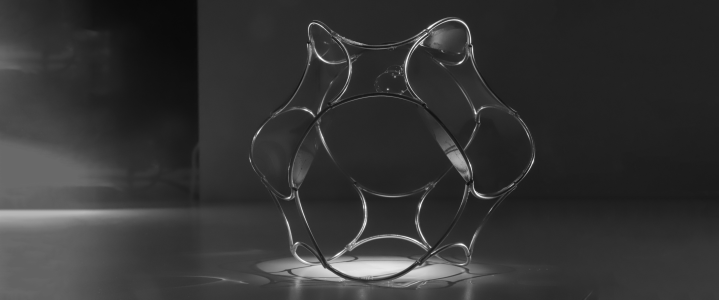Mathematics and the natural world don't always see eye to eye; or rather shape to shape. When mathematicians study how tiles fit together and cover surfaces, they keep it simple. Triangles, squares, and hexagons along with cubes and other polyhedra in three-dimensional space are built with sharp corners and flat faces. That works for maths.
But it doesn't work for Nature. It has preferred more complex shapes as it has charted its evolutionary course. Living organisms, such as muscle cells, use a dazzling array of patterns to form and grow. Most strikingly these patterns are characterised by shapes with curved edges, non-flat faces, and few, if any, sharp corners.
So how do we reconcile this to mathematics?
The answer discovered by mathematicians Alain Goriely in Oxford and Gábor Domokos, Krisztina Regős and Ákos G. Horváth from the Budapest University of Technology and Economics is a new class of mathematical shapes called soft cells. These shapes tile space without gaps and have a minimal number of sharp corners and edges. Remarkably, these ideal soft shapes, born out of purely mathematical considerations, are found abundantly in nature.
In the plane the minimal number of corners of a tile is two. These soft cells have therefore curved boundaries with only two corners. Such tiling patterns are found, among others, in muscle cells, zebra stripes, the shapes of river islands, in onion leaves and even in architectural design.
In three dimensions, these soft cells become more complex and interesting. The team first established that soft cells have no corners at all. Then, starting with known hard tilings such as the cubic grid, the team showed that they can be softened by suitably deforming the edges and removing all sharp corners in this process. Through this procedure, they found entire new classes of soft cells with different tiling properties. “We also found that architect Zaha Hadid arrived at two dimensional soft cells intuitively,” Gábor says. "In fact, a team of young architects constructed one of our three dimensional soft cells using the geometry of the Gömböc shape as an inspiration.”
Soon after, they realised that many such shapes appear in different contexts. But their most astounding discovery was that some of the inner chambers of the iconic Nautilus are themselves a realisation of soft cells. The section of chambers is a planar soft cell with two corners. "Despite having two corners in the plane, it appeared to me that there would be no corners in three dimensions,” Krisztina says. Indeed, using detailed CT images, the team found that chambers of the Nautilus and of many Ammonites are soft cells, filling the shell without corners. "Nature not only abhors a vaccuum, it also seems to abhor sharp corners,” explains Alain.
When we are children we are told to put a shell to our ear to hear the sea. We eventually learn to think better of folktales. But perhaps the shell had more to tell us than we realised.
Image: Soft version of the truncated octahedron. Model: Krisztina Regős. Photo: Gábor Domokos
Read the team's paper here (published in PNAS Nexus).


